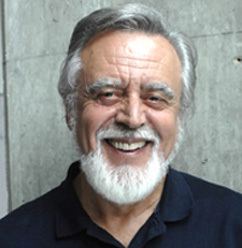Role Mathematician Name Dimitri Bertsekas | ||
 | ||
Institutions Stanford UniversityUniversity of Illinois at Urbana-ChampaignMassachusetts Institute of Technology Thesis Control of Uncertain Systems with a Set-Membership Description of the Uncertainty (1971) Known for Nonlinear programmingConvex optimizationDynamic programmingApproximate dynamic programmingStochastic systems and Optimal controlData communication networks Notable awards INFORMS Computing Society (ICS) Prize 1997Greek National Award for Operations ResearchACC John R. Ragazzini Education AwardMember of the United States National Academy of Engineering2009 INFORMS Expository Writing Award2014 AACC Richard E. Bellman Control Heritage Award2014 INFORMS Khachiyan Prize2015 SIAM/MOS Dantzig Prize Books Introduction to Probability, Dynamic Programming and Opti, Data Networks, Neuro‑dynamic programming, Parallel and Distribute Similar People Robert G Gallager, Paul Tseng, Dimitris Bertsimas, Pravin Varaiya | ||
Doctoral advisor Ian Burton Rhodes Residence United States of America | ||
Dimitri bertsekas incremental gradient subgradient and proximal methods for convex optimization
Dimitri Panteli Bertsekas (b. 1942, Athens, Greek: Δημήτρης Παντελής Μπερτσεκάς) is an applied mathematician and computer scientist, and a professor at the department of Electrical Engineering and Computer Science in School of Engineering at the Massachusetts Institute of Technology (MIT), Cambridge, Massachusetts.
Contents
- Dimitri bertsekas incremental gradient subgradient and proximal methods for convex optimization
- Dimitri Bertsekas Stable Optimal Control and Semicontractive Dynamic Programming
- Biography
- Awards and honors
- Textbooks and research monographs
- Books for free download
- References

Dimitri Bertsekas: Stable Optimal Control and Semicontractive Dynamic Programming
Biography
Bertsekas was born in Greece and lived his childhood there. He studied for five years at the National Technical University of Athens, Greece (a time that, by his account, was spent mostly in playing poker and chess, and dating his future wife Joanna) and studied for about a year and a half at The George Washington University, Washington, D.C. (at night, while working as a research engineer), where he obtained his M.S in Electrical Engineering in 1969, and for about two years at MIT, where he obtained his doctorate in system science in 1971. Prior to joining the MIT faculty in 1979, he taught for three years at the Engineering-Economic Systems Dept. of Stanford University, and for five years at the Electrical and Computer Engineering Dept. of the University of Illinois at Urbana-Champaign.
He is known for his research work, and for his sixteen textbooks and monographs in theoretical and algorithmic optimization and control, and in applied probability. His work ranges from theoretical/foundational work, to algorithmic analysis and design for optimization problems, and to applications such as data communication and transportation networks, and electric power generation. He is featured among the top 100 most cited computer science authors in the CiteSeer search engine academic database and digital library; see also his Google Scholar citations. In 1995, he co-founded a publishing company, Athena Scientific that among others, publishes most of his books.
In the late 90s Bertsekas developed a strong interest in digital photography. His photographs have been exhibited on several occasions at M.I.T., and can also be accessed from his www site http://web.mit.edu/dimitrib/www/home.html. See also an article describing his career and views on mathematical research and artistic photography.
Awards and honors
Bertsekas was awarded the INFORMS 1997 Prize for Research Excellence in the Interface Between Operations Research and Computer Science for his book "Neuro-Dynamic Programming" (co-authored with J. N. Tsitsiklis); the 2000 Greek National Award for Operations Research; and the 2001 ACC John R. Ragazzini Education Award for outstanding contributions to education. In 2001, he was elected to the US National Academy of Engineering for "pioneering contributions to fundamental research, practice and education of optimization/control theory, and especially its application to data communication networks". In 2009, he was awarded the 2009 INFORMS Expository Writing Award for his ability to "communicate difficult mathematical concepts with unusual clarity, thereby reaching a broad audience across many disciplines. " In 2014 he received the Richard E. Bellman Control Heritage Award from the American Automatic Control Council, the Khachiyan Prize for life-time achievements in the area of optimization from the INFORMS Optimization Society., and the 2015 Dantzig prize from SIAM and the Mathematical Optimization Society.
Textbooks and research monographs
Bertsekas' textbooks include
all of which are used widely for classroom instruction in many universities including MIT. Some of these books have been published in multiple editions, and have been translated in various foreign languages.
He has also written several widely referenced research monographs, which collectively contain most of his research. These include:
His latest research monograph is Abstract Dynamic Programming (2013), which aims at a unified development of the core theory and algorithms of total cost sequential decision problems, based on the strong connections of the subject with fixed point theory.
